|
|
|
Publications Textbook
Contributions Textbook
Contributions
| Andrew Adamatzky, Jörg Schnauß, Jack Tuszynski: |
| Actin |
|
Abstract of Chapter: We present the concept of actin networks, which serve as intracellular frameworks,
actuator systems, and pathways for information transfer and processing within cells.
|
| Adam Adamatzky (Ed.) WSPC Book Series in Unconventional Computing: Volume 3 (2024) |
| Eliane Blauth, Hans Kubitschke, Josef A. Kä, Jörg Schnauß: |
| Physical Properties of Single Cells
and Their Collective Behaviors |
|
Abstract of Chapter: Cells display a high degree of functional organization, largely attrbuted to the intracellular biopolymer
scaffold known as the cytoskeleton. This inherently complex structure drives the system out of equilibrium by constantly consuming
energy to conserve or reorganize its structure. Thus, the active, structurally organized cytoskeleton is the key player in the
emergent mechanical properties of cells, which further determine the properties of cell clusters and even multicellular organisms.
In this spirit, this chapter introduces the physical principles on the different levels of biological complexity ranging from single
bioplolymers to tissues. The emergent mechanical properties and their respective effects on each level will be highlighted with a strong
emphasis on their intertwined nature.
|
| Ingolf Sack, Tobias Schäffter (Eds.) Quantification of Biophysical Parameters in Medical Imaging (2024) |
| Andrew Adamatzky, Stefano Siccardi, Florian Huber, Jörg Schnauß and Jack Tuszynski: |
| Discovering Boolean
Functions on Actin Networks |
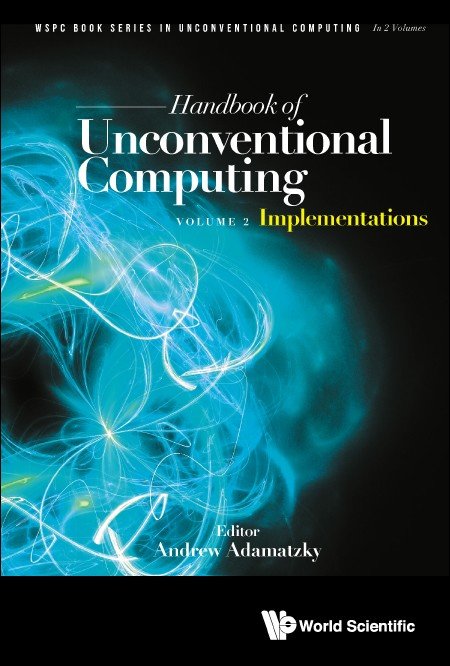 Abstract of Chapter: Actin filaments are conductive to ionic currents as well as mechanical and voltage solitons.
Two families of computing devices are discussed: collision-based computing and voltage-based computing.
Abstract of Chapter: Actin filaments are conductive to ionic currents as well as mechanical and voltage solitons.
Two families of computing devices are discussed: collision-based computing and voltage-based computing.
In collision-based computing, we employ travelling localizations to generate computing circuits from actin networks.
The propagation of localizations on a single actin filament is experimentally unfeasible to control. Therefore, we consider
excitation waves propagating on bundles of actin filaments. In computational experiments with a 2D slice of an actin bundle
network, we show that by using an arbitrary arrangement of electrodes, it is possible to implement two-inputs-one-output
circuits, {0, 1}n → {0, 1}n mapping finite state machine.
In voltage-based computing, we consider the bundles as electrical wires with either low or high filament densities.
A set of equations describing the network is solved with several initial conditions. Input voltages, which can be considered
as information bits, are applied in a set of points and output voltages are computed in another set of positions. We consider
both an idealized situation, where point-like electrodes can be inserted in any points of the bundles and a more realistic case,
where electrodes lay on a surface and have typical dimensions available in the industry. We find that in both cases such a
system can implement the main logical gates a finite state machine.
|
| Andrew Adamatzky (Ed.) Handbook of Unconventional Computing Vol. 2, Implementations, World Scientific Publishing Co. Pte. Ltd (2021) |
| Andrew I. Adamatzky, Jack Tuszynski, Jörg Pieper, Dan V. Nicolau,
Rosaria Rinaldi, Georgios Ch. Sirakoulis, Victor Erokhin, Jörg Schnauß, David M. Smith: |
| Towards Cytoskeleton Computers.
A Proposal |
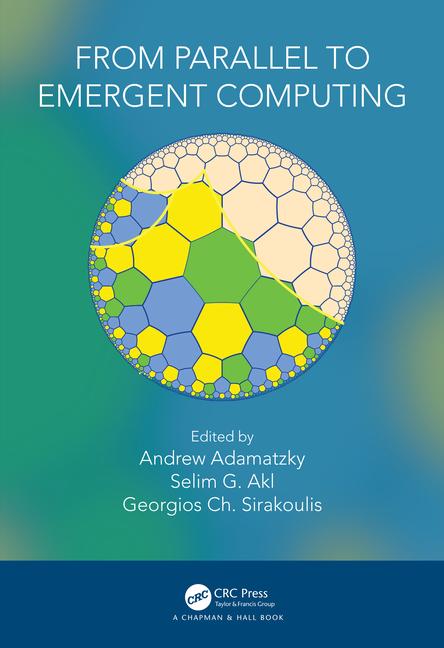 Abstract of Chapter: Actin and tubulin are key structural elements of Eukaryotes' cytoskeleton.
The networks of actin filaments and tubulin microtubules are substrates for cells' motility and mechanics,
intra-cellular transport and cell-level learning. Ideas of information processing taking place on a cytoskeleton network,
especially in neurons, have been proposed by Stuart, Hameroff and Steen. Rasmussen in the late 1980s in their designs of
tubulin microtubules automata and a general framework of cytoskeleton automata as sub-cellular information processing networks.
The cytoskeleton protein networks propagate signals in the form of ionic solitons, travelling conformation transformations and
breathers generated through electrical and mechanical vibrations. A collision-based, or dynamical, computation employs mobile
compact finite patterns, mobile self-localised excitations or simply localisations, in an active non-linear medium. These
localisations travel in space and perform computation when they collide with each other. Memristor is a device whose resistance
changes depending on the polarity and magnitude of a voltage applied to the device's terminals and the duration of the voltage's
application.
Abstract of Chapter: Actin and tubulin are key structural elements of Eukaryotes' cytoskeleton.
The networks of actin filaments and tubulin microtubules are substrates for cells' motility and mechanics,
intra-cellular transport and cell-level learning. Ideas of information processing taking place on a cytoskeleton network,
especially in neurons, have been proposed by Stuart, Hameroff and Steen. Rasmussen in the late 1980s in their designs of
tubulin microtubules automata and a general framework of cytoskeleton automata as sub-cellular information processing networks.
The cytoskeleton protein networks propagate signals in the form of ionic solitons, travelling conformation transformations and
breathers generated through electrical and mechanical vibrations. A collision-based, or dynamical, computation employs mobile
compact finite patterns, mobile self-localised excitations or simply localisations, in an active non-linear medium. These
localisations travel in space and perform computation when they collide with each other. Memristor is a device whose resistance
changes depending on the polarity and magnitude of a voltage applied to the device's terminals and the duration of the voltage's
application.
|
| Andrew Adamatzky, Selim Akl, Georgios Ch. Sirakoulis (Eds.) From Parallel to Emergent Computing.
CRC Press (2019) |
| Hans Kubitschke, Erik W. Morawetz, Josef A. Käs, Jörg Schnauß: |
| Physical
Properties of Single Cells and Collective Behavior |
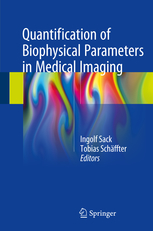 Abstract of Chapter: Cells display a high degree of functional organization, largely attributed to the intracellular
biopolymer scaffold known as the cytoskeleton. This inherently complex structure drives the system out of equilibrium by
constantly consuming energy to conserve or reorganize its structure. Thus, the active, structurally organized cytoskeleton
is the key player for the emergent mechanical properties of cells, which further determine properties of cell clusters and
even multicellular organisms. In this spirit, this chapter introduces the physical principles on the different levels of
biological complexity ranging from single biopolymers to tissues. The emergent mechanical properties and their respective
effects on each level will be highlighted with a strong emphasis on their intertwined nature.
Abstract of Chapter: Cells display a high degree of functional organization, largely attributed to the intracellular
biopolymer scaffold known as the cytoskeleton. This inherently complex structure drives the system out of equilibrium by
constantly consuming energy to conserve or reorganize its structure. Thus, the active, structurally organized cytoskeleton
is the key player for the emergent mechanical properties of cells, which further determine properties of cell clusters and
even multicellular organisms. In this spirit, this chapter introduces the physical principles on the different levels of
biological complexity ranging from single biopolymers to tissues. The emergent mechanical properties and their respective
effects on each level will be highlighted with a strong emphasis on their intertwined nature.
|
| Ingolf Sack, Tobias Schäffter (Eds.) Quantification of Biophysical Parameters in Medical Imaging.
Springer International Publishing (2018) |
| Jörg Schnauß, Josef A. Käs, David M.
Smith: |
| Contact-free
Mechanical Manipulation of Biological Materials |
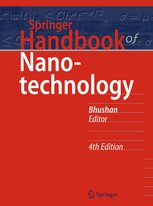 Abstract
of Chapter: In biotechnology and medicine, controlled studies on
biological material are fundamental for developing new methodologies and
therapeutic approaches. To explore the nature of biological processes and
to test inherent material properties, it has become increasingly clear
that new experimental methods must be developed in order to allow precise
manipulations and quantification of biological materials on the microscopic
level. Traditional methods often rely on physical contact with the sample,
which can induce drastic artifacts in soft biological systems. To bypass
this limitation, tools for contact-free manipulation were developed, which
even enable the induction of whole-cell deformations to explore their mechanical
properties. These approaches facilitate extensive investigations of single
molecules, molecular ensembles, cells and even tissues, potentially reducing
the need for animal studies. In this rapidly changing field, it is nearly
impossible to provide a comprehensive overview of all available techniques
since new methods are constantly being developed. In this chapter, we highlight
many of the predominant approaches, aiming to investigate cellular as well
as subcellular mechanical properties and processes. Abstract
of Chapter: In biotechnology and medicine, controlled studies on
biological material are fundamental for developing new methodologies and
therapeutic approaches. To explore the nature of biological processes and
to test inherent material properties, it has become increasingly clear
that new experimental methods must be developed in order to allow precise
manipulations and quantification of biological materials on the microscopic
level. Traditional methods often rely on physical contact with the sample,
which can induce drastic artifacts in soft biological systems. To bypass
this limitation, tools for contact-free manipulation were developed, which
even enable the induction of whole-cell deformations to explore their mechanical
properties. These approaches facilitate extensive investigations of single
molecules, molecular ensembles, cells and even tissues, potentially reducing
the need for animal studies. In this rapidly changing field, it is nearly
impossible to provide a comprehensive overview of all available techniques
since new methods are constantly being developed. In this chapter, we highlight
many of the predominant approaches, aiming to investigate cellular as well
as subcellular mechanical properties and processes.
|
| Bhushan B. (Ed.) Springer Handbook of Nanotechnology.
Springer Handbooks. Springer, Berlin, Heidelberg (2017) |
| Mareike Zink: |
| Biocompatibility
of Thin Films |
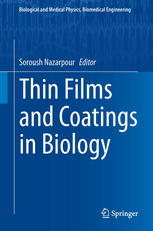 Abstract
of Chapter 36: The interaction of soft living matter with different
substrate materials such as thin films made of metals, ceramics and carbon-based
materials have attracted more and more interest over the last decades.
Thin films yield the potential to build miniaturized devices for tissue
regeneration, implants, stents, as well as drug delivery systems. However,
the interaction of materials with cells and tissue must first be investigated
in detail to ensure safe and long-time handling when implanted within the
human body. This chapter describes the basics of biocompatibility and bioactivity
of thin films and gives a short introduction how behavior and viability
of cells and tissue in contact with different materials are assessed. In
fact, biocompatibility properties in terms of corrosion resistance and
the in vitro and in vivo performance of thin films made of metals, alloys,
ceramics, carbon-based materials and nanostructured films will be discussed,
as well as their application. This chapter ends with an outlook on future
applications and requirements to supply new thin film based materials for
medical applications in a fast growing market of miniaturized devices for
diagnosis and therapy. Abstract
of Chapter 36: The interaction of soft living matter with different
substrate materials such as thin films made of metals, ceramics and carbon-based
materials have attracted more and more interest over the last decades.
Thin films yield the potential to build miniaturized devices for tissue
regeneration, implants, stents, as well as drug delivery systems. However,
the interaction of materials with cells and tissue must first be investigated
in detail to ensure safe and long-time handling when implanted within the
human body. This chapter describes the basics of biocompatibility and bioactivity
of thin films and gives a short introduction how behavior and viability
of cells and tissue in contact with different materials are assessed. In
fact, biocompatibility properties in terms of corrosion resistance and
the in vitro and in vivo performance of thin films made of metals, alloys,
ceramics, carbon-based materials and nanostructured films will be discussed,
as well as their application. This chapter ends with an outlook on future
applications and requirements to supply new thin film based materials for
medical applications in a fast growing market of miniaturized devices for
diagnosis and therapy.
Book Description: The surface of materials
is routinely exposed to various environmental influences. Surface modification
presents a technological challenge for material scientists, physicists,
and engineers, particularly when those surfaces are subjected to function
within human body environment. This book provides a comprehensive coverage
of the major issues and topics dealing with interaction of soft living
matter with the surface of implants. Fundamental scientific concepts are
embedded through experimental data and a broad range of case studies. First
chapters cover the basics on biocompatibility of many different thin films
of metals, alloys, ceramics, hydrogels, and polymers, following with case
studies dealing with orthopedic and dental coatings. Next, a novel and
low-cost coating deposition technique capable of production of several
types of nanostructures is introduced through simple calculations and several
illustrations. Moreover, chapter 6 and 7 present important topics on surface
treatment of polymers, which is a subject that has seen many developments
over the past decade. The last chapters target mainly the applications
of coatings in biology such as in bio-sensing, neuroscience, and cancer
detection. With several illustrations, micrographs, and case studies along
with suitable references in each chapter, this book will be essential for
graduate students and researchers in the multidisciplinary field of bio-coatings.
|
| Soroush Nazarpour (Ed.): Thin Films and Coatings in
Biology, Chapter 2 (11-67), Springer, Berlin Heidelberg (2013) |
| Carsten Stüber, Tobias Kießling, Anatol
Fritsch, Franziska Wetzel, Christian Schulze, Dan Strehle, Josef Käs: |
| Optical
Cell Manipulation |
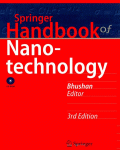 Abstract
of Chapter 36: In current biotechnology and biomedicine, cell-based
investigations are rapidly gaining importance due to the recognition that
molecular research alone does not provide a sufficiently complex insight.
The high cost of animal studies and the fact that their results often cannot
be directly transferred to humans additionally shifts the focus towards
cell-based assays. This current trend triggers the development of more
sophisticated laser-based techniques to manipulate and investigate cells.
In this rapidly changing field, it is nearly impossible to provide a comprehensive
view of all available techniques, since new techniques are constantly developed
on nearly a weekly basis. In this chapter, we have made an effort to provide
the physical basis for laser-based cell manipulation, complemented by several
of the more exceptional applications of optical cell manipulation. Abstract
of Chapter 36: In current biotechnology and biomedicine, cell-based
investigations are rapidly gaining importance due to the recognition that
molecular research alone does not provide a sufficiently complex insight.
The high cost of animal studies and the fact that their results often cannot
be directly transferred to humans additionally shifts the focus towards
cell-based assays. This current trend triggers the development of more
sophisticated laser-based techniques to manipulate and investigate cells.
In this rapidly changing field, it is nearly impossible to provide a comprehensive
view of all available techniques, since new techniques are constantly developed
on nearly a weekly basis. In this chapter, we have made an effort to provide
the physical basis for laser-based cell manipulation, complemented by several
of the more exceptional applications of optical cell manipulation.
Book Description: Since 2004 and with
the 2nd edition in 2007, the Springer Handbook of Nanotechnology has established
itself as the definitive reference in the nanoscience and nanotechnology
area. It integrates the knowledge from nanofabrication, nanodevices, nanomechanics,
Nanotribology, materials science, and reliability engineering in just one
volume. Beside the presentation of nanostructures, micro/nanofabrication,
and micro/nanodevices, special emphasis is on scanning probe microscopy,
nanotribology and nanomechanics, molecularly thick films, industrial applications
and microdevice reliability, and on social aspects. In its 3rd edition,
the book grew from 8 to 9 parts now including a part with chapters on biomimetics.
More information is added to such fields as bionanotechnology, nanorobotics,
and (bio)MEMS/NEMS, bio/nanotribology and bio/nanomechanics. The book is
organized by an experienced editor with a universal knowledge and written
by an international team of over 150 distinguished experts. It addresses
mechanical and electrical engineers, materials scientists, physicists and
chemists who work either in the nano area or in a field that is or will
be influenced by this new key technology.
|
| Bharat Bhushan (Ed.): Springer Handbook of Nanotechnology,
3rd Edition, Chapter 36 (1201-1226), Springer, Berlin Heidelberg (2010) |
| Karla Müller, Anatol Fritsch, Tobias Kießling,
Marc Großerüschkamp, Josef A. Käs: |
| Optical
Stretcher for Single Cells |
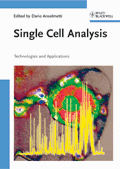 Book
Description: This first modern book on the topic gives a broad overview
on current technology and application areas for single cell approaches
in life sciences. Book
Description: This first modern book on the topic gives a broad overview
on current technology and application areas for single cell approaches
in life sciences.
Identification and imaging of single cells which is the most widely
applied single cell technology, is described in the opening section, including
fluorescence based methods, electron tomography and atomic force techniques.
The core section of the book covers a wide range of technologies for the
handling, manipulation and constituent analysis of individual cells. The
final section is dedicated to case studies and specific applications, with
examples ranging from cell biology and genetics to molecular medicine.
With its wide range to technologies and applications, this book is
the perfect companion for all scientists entering this growing field.
|
| Dario Anselmetti (Ed.): Single Cell Analysis - Technologies
and Applications, 1. Edition, Chapter 8 (161-174), Wiley-VCH, Weinheim
(2009) |
| Kristian Franze, Andreas Reichenbach, Josef Käs: |
| Biomechanics
of the CNS |
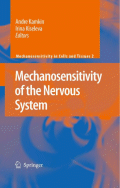 Abstract
of Chapter 10: For a long time, neurosciences have focused on biochemical,
molecular, and electrophysiological aspects of cell functioning. However,
there is an increasing awareness of the importance of biomechanics in physiology
and pathology of the central nervous system (CNS). In the first part of
this review we provide physical basics necessary to understand biomechanical
measurements, we introduce the cytoskeleton as a major contributor to a
cell’s passive and active mechanical behavior, and we discuss some of the
methods nowadays used to quantify mechanical properties. In the second
part we present actual data on CNS mechanics, and we discuss the impact
of passive mechanical material properties and active mechanical behavior
of cells on the development, normal functioning and pathology of the CNS. Abstract
of Chapter 10: For a long time, neurosciences have focused on biochemical,
molecular, and electrophysiological aspects of cell functioning. However,
there is an increasing awareness of the importance of biomechanics in physiology
and pathology of the central nervous system (CNS). In the first part of
this review we provide physical basics necessary to understand biomechanical
measurements, we introduce the cytoskeleton as a major contributor to a
cell’s passive and active mechanical behavior, and we discuss some of the
methods nowadays used to quantify mechanical properties. In the second
part we present actual data on CNS mechanics, and we discuss the impact
of passive mechanical material properties and active mechanical behavior
of cells on the development, normal functioning and pathology of the CNS.
Book Description: This book presents the
latest findings in mechanosensitivity of the nervous system. The nervous
system stands out from a number of tissues because besides reacting to
the mechanical stress it is transmitting its own response to other organs
and tissues, which are located downstream of its signaling pathway. For
this reason any type of mechanical stimulation of the nervous system, which
is capable of triggering a physiological response, has high scientific
and practical significance, since it allows its use beyond a particular
experimental model anywhere where it is contributing to a particular pathological
condition.
This book is a unique collection of reviews outlining the current knowledge
and the future developments in this rapidly growing field. Currently, investigations
of the effects of mechanical stress on the nervous system are focused on
several issues. The majority of studies investigate the effects of mechanical
stimulation on mechanosensitive channels, as its primary target and interactive
agent, and aim on description of downstream intracellular signaling pathways
together with addressing general issues of biomechanics of the nervous
system. Knowledge of biomechanics, and mechanisms, which underlie it on
organism, organ, tissue and cellular level, is necessary for understanding
of the normal functioning of living organisms and allows to predict changes
which arise due to alterations of their environment, and possibly will
allow to develop new methods of artificial intervention.
The book brings up the problem closer to the experts in related medical
and biological sciences as well as practicing doctors besides just presenting
the latest achievements in the field.
|
| Andre Kamkin, Irina Kiseleva (Eds.): Mechanosensitivity
of the Nervous System, Series: Mechanosensitivity in Cells and Tissues
(Volume 2), 1. Edition, Chapter 10 (173-214), Springer Science+Business
Media B.V. (2008) |
| Bryan Lincoln, Falk Wottawah, Stefan Schinkinger, Susanne
Ebert, Jochen Guck: |
| High-Throughput
Rheological Measurements with an Optical Stretcher |
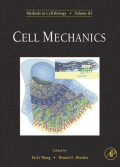 Abstract
of Chapter 17: The cytoskeleton is a major determinant of the mechanical
strength and morphology of most cells. The composition and assembly state
of this intracellular polymer network evolve during the diVerentiation
of cells, and the structure is involved in many cellular functions and
is characteristically altered in many diseases, including cancer. Here
we exploit the deformability of the cytoskeleton as a link between molecular
structure and biological function, to distinguish between cells in diVerent
states by using a laser-based optical stretcher (OS) coupled with microfluidic
handling of cells. An OS is a cell-sized, dual-beam laser trap designed
to nondestructively test the deformability of single suspended cells. Combined
with microfluidic delivery, many cells can be measured serially in a short
amount of time.With this tool it could be shown that optical deformability
is sensitive enough to monitor subtle changes during the progression of
cells from normal to cancerous and even a metastatic state. Stem cells
can also be distinguished from more diVerentiated cells. The surprisingly
low number of cells required for this assay reflects the tight regulation
of the cytoskeleton by the cell. This suggests the possibility of using
optical deformability as an inherent cell marker for basic cell biological
investigation, diagnosis of disease, and sorting of stem cells from heterogeneous
populations, obviating the need for external markers or special preparation.
Many additional biological assays can be easily adapted to utilize this
innovative physical method. This chapter details the setup and use of the
microfluidic OS, the analysis and interpretation of data, and the results
of a typical experiment. Abstract
of Chapter 17: The cytoskeleton is a major determinant of the mechanical
strength and morphology of most cells. The composition and assembly state
of this intracellular polymer network evolve during the diVerentiation
of cells, and the structure is involved in many cellular functions and
is characteristically altered in many diseases, including cancer. Here
we exploit the deformability of the cytoskeleton as a link between molecular
structure and biological function, to distinguish between cells in diVerent
states by using a laser-based optical stretcher (OS) coupled with microfluidic
handling of cells. An OS is a cell-sized, dual-beam laser trap designed
to nondestructively test the deformability of single suspended cells. Combined
with microfluidic delivery, many cells can be measured serially in a short
amount of time.With this tool it could be shown that optical deformability
is sensitive enough to monitor subtle changes during the progression of
cells from normal to cancerous and even a metastatic state. Stem cells
can also be distinguished from more diVerentiated cells. The surprisingly
low number of cells required for this assay reflects the tight regulation
of the cytoskeleton by the cell. This suggests the possibility of using
optical deformability as an inherent cell marker for basic cell biological
investigation, diagnosis of disease, and sorting of stem cells from heterogeneous
populations, obviating the need for external markers or special preparation.
Many additional biological assays can be easily adapted to utilize this
innovative physical method. This chapter details the setup and use of the
microfluidic OS, the analysis and interpretation of data, and the results
of a typical experiment.
Book Description: Cell mechanics is the
field of study that looks at how cells detect, modify, and respond to the
physical properties of the cell environment. Cells communicate with each
other through chemical and physical signals which are involved in a range
of process from embryogenesis and wound healing to pathological conditions
such as cancerous invasion. Similar principles are also likely to be critical
for success in regenerative medicine. Cell mechanics is thus central to
understanding these principles. As cell mechanics draws from the fields
of biology, chemistry, physics, engineering, and mathematics, this book
aims not only to provide a collection of research methods, but also to
develop a common language among scientists who share the interest in cell
mechanics but enter the field with diverse backgrounds. To this end all
of the contributing authors have sought to explain in plain language the
nature of the biological problems, the rationale for the approaches, in
addition to the methods themselves. In addition, to balance practical utility
against conceptual advances, the book has intentionally included both chapters
that provide detailed recipes and those that emphasize basic principles.
|
| Yu-Li Wang, Dennis E. Discher (Eds.): Cell Mechanics,
Series: Methods in Cell Biology (Volume 83), 1. Edition, Chapter 17 (397-423),
Academic Press (2007) |
| Allen Ehrlicher, Timo Betz, Björn Stuhrmann, Michael
Gögler, Daniel Koch, Kristian Franze, Yun-Bi Lu, Josef Käs: |
| Optical
Neuronal Guidance |
 Abstract
of Chapter 21: We present a novel technique to noninvasively control
the growth and turning behavior of an extending neurite. A highly focused
infrared laser, positioned at the leading edge of a neurite, has been found
to induce extension/turning toward the beam's center. This technique has
been used successfully to guide NG108-15 and PC12 cell lines [Ehrlicher,
A., Betz, T., Stuhrmann, B., Koch, D. Milner, V. Raizen, M. G., and Kas,
J. (2002). Guiding neuronal growth with light. Proc. Natl. Acad. Sci. USA
99, 16024–16028], as well as primary rat and mouse cortical neurons [Stuhrmann,
B., Goegler, M., Betz, T., Ehrlicher, A., Koch, D., and Kas, J. (2005).
Automated tracking and laser micromanipulation of cells. Rev. Sci. Instr.
76, 035105]. Optical guidance may eventually be used alone or with other
methods for controlling neurite extension in both research and clinical
applications. Abstract
of Chapter 21: We present a novel technique to noninvasively control
the growth and turning behavior of an extending neurite. A highly focused
infrared laser, positioned at the leading edge of a neurite, has been found
to induce extension/turning toward the beam's center. This technique has
been used successfully to guide NG108-15 and PC12 cell lines [Ehrlicher,
A., Betz, T., Stuhrmann, B., Koch, D. Milner, V. Raizen, M. G., and Kas,
J. (2002). Guiding neuronal growth with light. Proc. Natl. Acad. Sci. USA
99, 16024–16028], as well as primary rat and mouse cortical neurons [Stuhrmann,
B., Goegler, M., Betz, T., Ehrlicher, A., Koch, D., and Kas, J. (2005).
Automated tracking and laser micromanipulation of cells. Rev. Sci. Instr.
76, 035105]. Optical guidance may eventually be used alone or with other
methods for controlling neurite extension in both research and clinical
applications.
Book Description: Cell mechanics is the
field of study that looks at how cells detect, modify, and respond to the
physical properties of the cell environment. Cells communicate with each
other through chemical and physical signals which are involved in a range
of process from embryogenesis and wound healing to pathological conditions
such as cancerous invasion. Similar principles are also likely to be critical
for success in regenerative medicine. Cell mechanics is thus central to
understanding these principles. As cell mechanics draws from the fields
of biology, chemistry, physics, engineering, and mathematics, this book
aims not only to provide a collection of research methods, but also to
develop a common language among scientists who share the interest in cell
mechanics but enter the field with diverse backgrounds. To this end all
of the contributing authors have sought to explain in plain language the
nature of the biological problems, the rationale for the approaches, in
addition to the methods themselves. In addition, to balance practical utility
against conceptual advances, the book has intentionally included both chapters
that provide detailed recipes and those that emphasize basic principles.
|
| Yu-Li Wang, Dennis E. Discher (Eds.): Cell Mechanics,
Series: Methods in Cell Biology (Volume 83), 1. Edition, Chapter 21 (495-520),
Academic Press (2007) |
| Revathi Ananthakrishnan, Jochen Guck, Josef Kas: |
| Cell
Mechanics: Recent advances with a theoretical perspective |
| Abstract: N/A
|
| S.G. Pandalai (Ed.): Transworld Research Network: Recent
Research Developments in Biophysics, Volume 5, Part I, 39-69, Transworld
Research Network, Trivandrum, India (2006) |
|
|



